

24/7 Wall Street Insights
- The Dow Jones Industrial Average recently cracked 40,000 for an all-time new high.
- The 30 stocks that comprise the DJIA have not uniformly boosted the average at the same time.
- Amazon, Honeywell and Chevron are three Dow stocks that may have some sizable upside potential left for the remainder of 2024, all for different reasons.
- For investors seeking dividends, click here for a free report on two high dividend stocks,
The Wall Street Journal was co-founded by Charles Dow and Edward Jones. In 1896, Dow created a price-weighted index out of 30 listed stocks that he felt represented a snapshot of US industry and published it in the WSJ. This instantly popular Dow Jones Industrial Average index would continue, albeit with some replacement stocks over the ensuing decades. It was regarded as a barometer of US economic health and industrial value and continues to be considered as such to the present day. Since all of the Dow Stocks are S&P 500 members, they are typically companies with market caps in the high 9 figures or higher. Therefore, Dow stocks have an inherent principal safety factor comfort level for those investors who are traditionally on the risk averse side.
In mid-May, 2024, The Dow Jones Industrial Average closed above 40,000 for the first time, a new record high. Other economic conditions, such as inflation, excess cash, institutional program trading, and short coverage notwithstanding, a number of the Dow member stocks also scored new highs.
After 40,000, Are There Any Dow Stocks Left With Gas In The Tank?
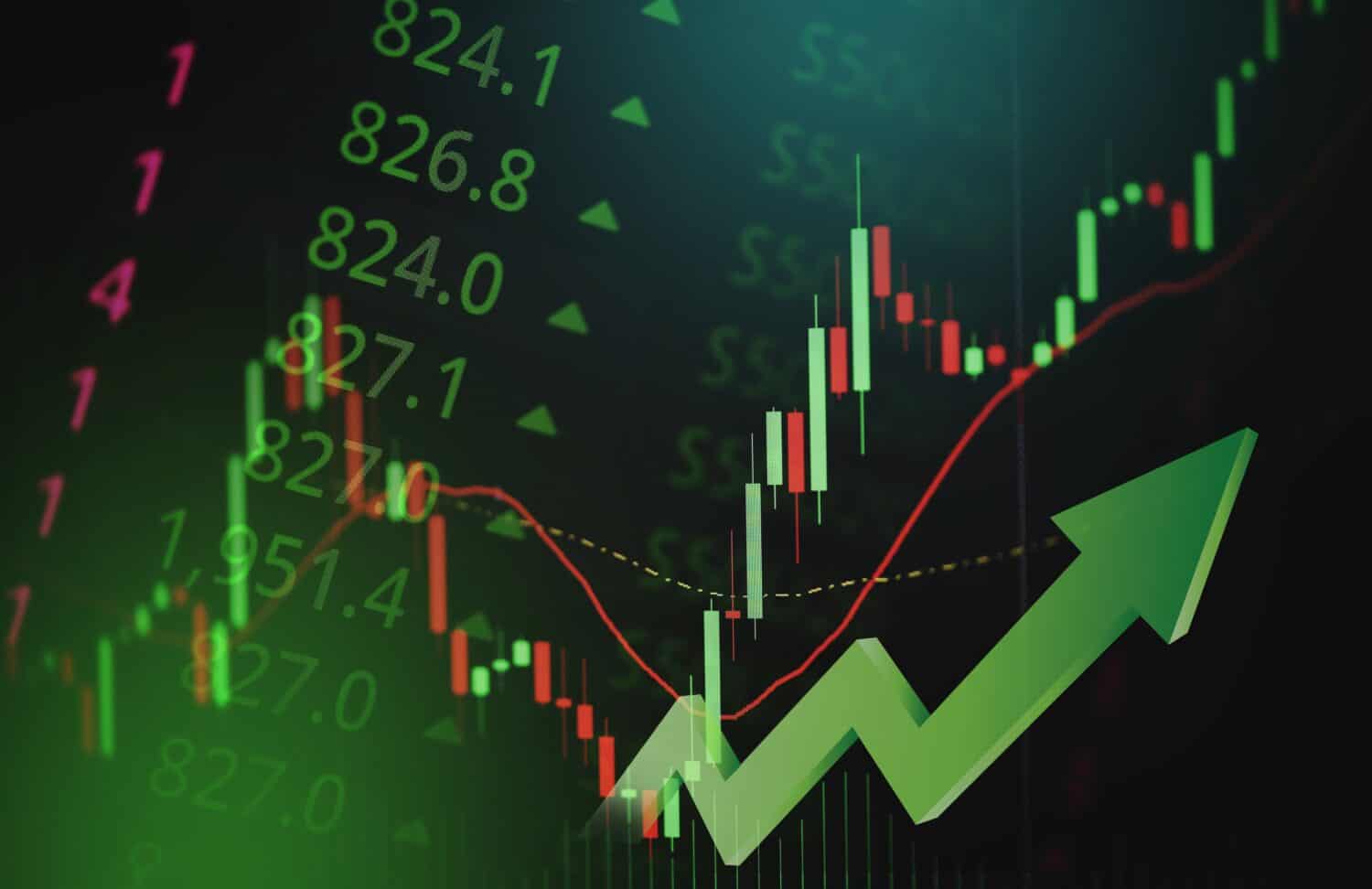
June is fast approaching at the time of this writing. Conventional wisdom might be to expect a pull back, as many Wall Streeters and others in the financial sector prepare for vacations and summer slowdowns. However, there are a few Dow stocks whose peaks may be lagging, due to unrelated extenuating circumstances, and might be worth buying consideration for June. As all three listed here are in completely separate industrial sectors, the underlying reasons for their respective upside potential are uniquely individual.
Amazon.com Inc.
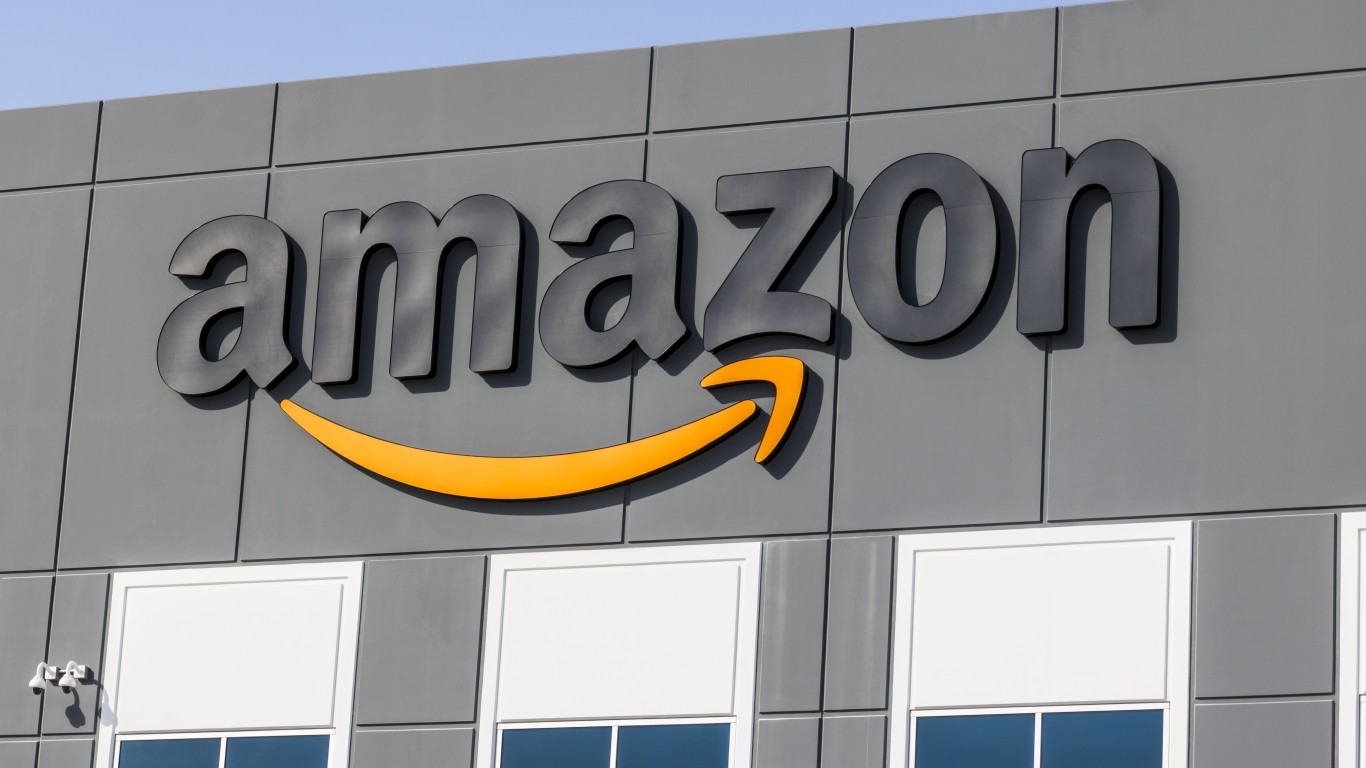
Until they were replaced at the position of “richest man in the world” by Bernard Arnault of LVMH Moët Hennessy Louis Vuitton (OTC: LVMUY), the title was alternating between Elon Musk of Tesla (NASDAQ: TSLA), and Jeff Bezos of Amazon.com (NASDAQ: AMZN). Amazon has been covered frequently in past 24/7 Wall Street articles, but the following analysis is based on its most recent Q1 2024 earnings report details.
While Amazon is one of the “Magnificent Seven” stocks that have been driving the market, it had a number of cash-draining obstacles that it had to resolve, dating back to 2022. Each of these obstacles were eroding about $2 billion per year from profits, for an annual $6 billion:
- inflationary costs
- labor and productivity problems
- FBA (Fulfillment by Amazon) overcapacity
Inflation was addressed through a rate hike for Amazon Prime subscribers, and a fuel surcharge for Amazon sellers. This led to a projected $4 billion per year for late 2022 going into 2023.
To improve productivity and reduce the over-bloated personnel issue, Amazon laid off 27,000 employees between November 2022 and March 2023. The cuts have continued to the present, with total full and part time staff reduced from a total of 1.61 million workers to 1.52 million. Productivity would subsequently climb from $95 billion in Q1 2022 to $118.2 billion in Q1 2024.
As a result of the pandemic lockdowns, Amazon added enormous warehousing and transportation facilities to meet the demand from the voluminous retail orders. During the post-pandemic era, a percentage of in-person retail shopping returned to the market, and much of Amazon’s extra capacity was idle more often than not. Over the next two years, the company would cut its total capital and lease expenditures by a net $7.5 billion.
Amazon’s Upbeat Prospects

With remedies underway for the problems stemming from 2022, Amazon has been regaining lost ground. Moving ahead into 2024, there are several fundamental analysis and business related developments that give cause for bullish sentiments.
From a fundamental basis, Amazon’s cash flow has drastically reversed from Q1 2023 (-$3.3) billion to +$50 billion in Q1 2024. Additionally, North American operating income also reversed 180 degrees from (-$1) billion to +$1.2 billion in the same period. Lastly, Operating income has leaped from $13.3 billion to $47 billion in those same 12 months.
Amazon’s much improved cash flow position gives it the potential to issue a future dividend or execute a stock buyback program if deemed strategically appropriate.
From a business perspective, it’s easy to overlook the fact that while Amazon is best known for its long and broad e-commerce reach, it also has other revenue generating divisions. For example, Amazon Prime is both a free product delivery service, as well as a media production and streaming platform through the Amazon Prime streaming service. Additionally, Amazon is a hardware producer, with its Kindle and Firestick products, and it provides cloud computing services though Amazon Web Services (AWS).
Ironically, Google’s Cloud AI and Microsoft’s Azure got the jump on Amazon with the tidal wave of AI ubiquity and the huge ramp-up of demand because of their proprietary AI services and tools that had either been developed in-house or acquired.
Though late to the game, Amazon’s $4 billion investment into Anthropic now gives AWS its own suite of AI tools. As a result, AWS net sales are now up 17% over Q1 2023, and operating income has risen 84%.
Analyst consensus seems to believe that Amazon has more horsepower to go further, given these aforementioned developments and achievements. At the time of this writing, AMZN is trading in the $180 – $183 per share range. The most recent 12-month price target among the analysts is in the $225 – $227 range.
Honeywell International Inc.
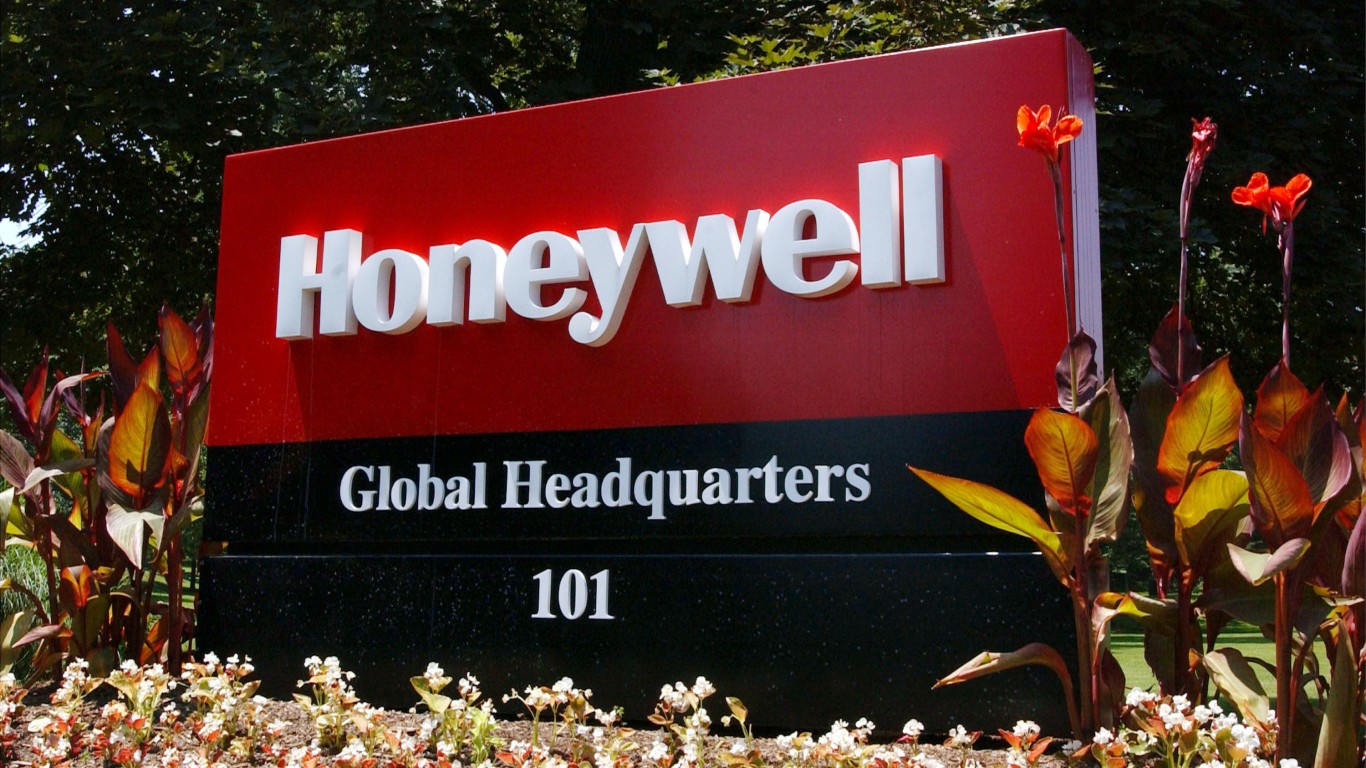
Honeywell International Inc. (NASDAQ: HON) is a conglomerate with a focus on technology and innovation to become an indispensable provider of critical products for modern societies. Some of its most important contributions include the creation of home heating units, biodegradable detergents, aircraft autopilot systems and barcodes for inventory management.
Honeywell has expanded to four divisions:
- Aerospace (propulsion engines, avionics, navigation, radar, satellites, etc.)
- Building Automation (video surveillance, power controls, sensors, etc.)
- Performance Materials & Technology (body armor, instrument automation, nylon, etc.)
- Safety Solutions (protective gear, apparel and footwear, gas detection, switching systems, emergency alert systems, etc.)
Previous 24/7 Wall Street articles on Honeywell often are specifically citing corporate earnings. However, there are trends and geopolitical circumstances that make some of Honeywell’s products particularly significant for the prospective near future that will very likely make substantive contributions to forthcoming corporate earnings.
Data Cooling and Quantum Computing For the Future

As mentioned above, Amazon’s Anthropic JV for an AI platform will likely bring in billions of revenues for AWS. However, AWS, Google Cloud, Microsoft Azure and all other platforms that operate from data centers house massive banks of digital servers that require maintenance in a cool, temperature-controlled environment. In order to prevent digital data corruption and compromise due to heat, Honeywell’s $1 billion Solstice refrigerant technology may become one of its biggest assets for the future.
Additionally, Honeywell is at the forefront of quantum computing, which rivals AI in its game changing potential. Honeywell recently spun off its quantum computing technology as a separate entity named Quantinuum, while remaining the majority investor and primary development partner. A $300 million fundraising round in early 2024 included big name non rivals, such as Amgen.
War (What Is It Good For?) – The F-35 and Other Military Gear
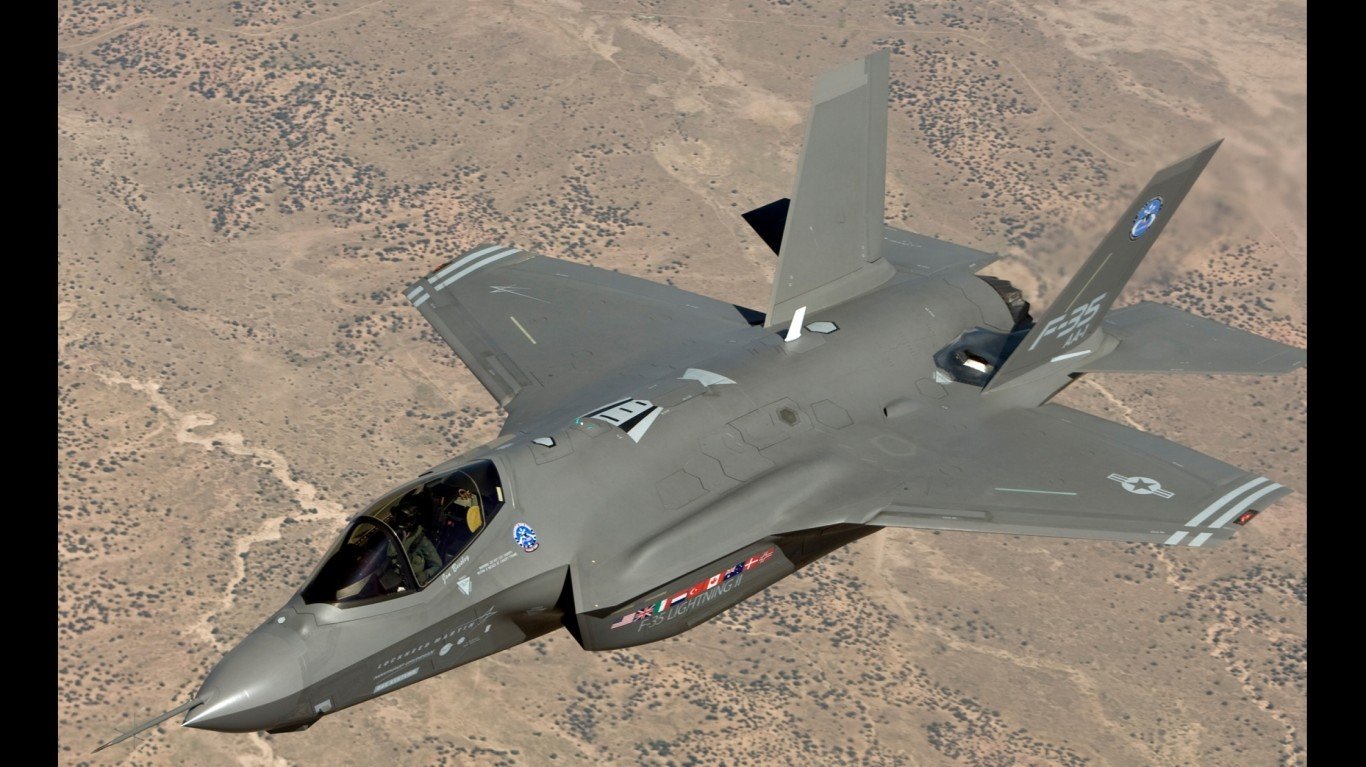
The answer to Edwin Starr’s classic anti-Vietnam War recording of “War (What Is It Good For?)” has been reiterated countless times: the military industrial complex. While Honeywell’s overall menu of products is huge, the company has a significant, albeit understated, presence in the defense industry, building aerospace, munitions, and other military devices and components. At the time of this writing, Israel and Hamas are still locked in war, as is Russia and Ukraine. Recent reports indicate that China may launch military actions in an effort to take Taiwan, which it regards as a Chinese province, not an independent nation.
Tom Cruise’s original Top Gun blockbuster movie showcased the Lockheed Martin F-35 fighter plane. Less publicized is the fact that Honeywell supplies the power and thermal management system for the F-35, which reduces its weight by half a ton. Honeywell also supplies over 100 F-35 components for wheels, brakes, life support, emergency power, and essential electronics systems, according to Honeywell’s President of Defence and Space Business, Matt Milas.
Milas is in the midst of a project to improve the F-35’s technology to deliver computing power, radar, and electronic warfare enhancements. These improvements will likely become standard equipment upgrades on all currently active and future F-35 fighter jets. As a result:
- Israel at present has an estimated fleet of 50 Lockheed Martin F-35s, with an order for 25 more reported in Q3 2023.
- While Ukraine itself lacks the funds and training for its own F-35s, the US has already sent a number of them to the region for NATO support.
- As for Taiwan, it is expected to formally declare a procurement request for fifth generation F-35s this coming July, according to Taiwan’s Minister of National Defense, Feng Shih-kuan.
It should be noted that Taiwan already has been a past customer of another Honeywell product, the MK-48 heavyweight torpedo, since 2016. If the current international military activities continue, Honeywell missile guidance systems, satellite communications, radar, missile, propulsions, transport engines, and other products will likely be procured in large supply, adding to its bottom line at a not insignificant level.
Chevron Corporation

According to Statista, Chevron Corporation (NYSE: CVX) is the second largest US oil company by market capitalization. At the time of this writing, the CVX market cap is at $290 billion. Although 24/7 Wall Street has published previous articles about Chevron, the below analysis is predicated on certain unique circumstances at the time of this writing.
The Hess Merger Controversy
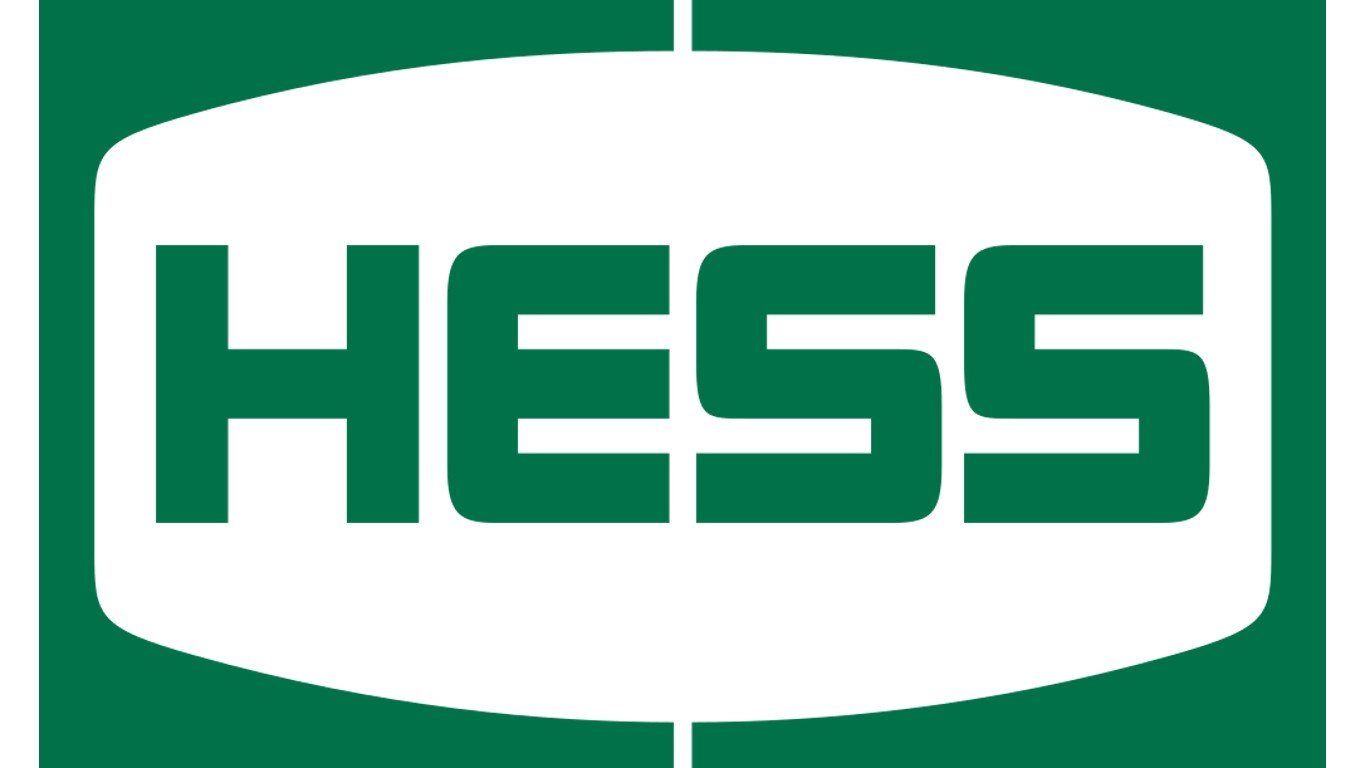
The current Chevron issue which has many speculators betting on is its $53 billion merger proposal with Hess Corp., which shareholders are expected to vote for or against on May 28, 2024. Based on Hess Corp.’s 30% stake in Guyana’s Stabroek oil field, this would be one of the largest merger transactions in history. CEO John Hess has been lobbying for the deal, but there are several obstacles:
- Exxon, who co-owns Stabroek with a 45% stake, claims it should have “right of first refusal”, and thus the case is presently in arbitration.
- Institutional investors and proxy advisors have taken sides, with Glass Lewis & Co. in favor of the deal, while D.E. Shaw, ISS, and HBK Capital Management preferring to hold off the vote until after arbitration is completed..
- Senator Chuck Schumer and the FTC are trying to scuttle the deal on questionable accusations of potential antitrust violations from the deal that could hurt consumers.
According to Reuters, the lobbying from John Hess may have paid off, as he is estimated to have swayed enough of the 40% outstanding shares to get the merger approved.
Bread and Butter Business

Merger concerns aside, Chevron’s fundamental business appears solid and has continued to grow. West Texas Intermediate (WTI) crude oil has been trading in the mid-to-high $70 per barrel level. Due to OPEC production cuts and the ongoing Middle East and Ukraine wars, which are both impacting world oil prices, the US Energy Information Administration (EIA) is forecasting WTI to climb to $83.06 per barrel in 2024.
Chevron is one of the largest producers of Permian Basin crude, which is extracted through fracking. Derived from shale, this oil has an average cost of $50 per barrel, which is giving Chevron close to a 50% markup at current market prices. Additionally, Chevron pays zero royalties, so gross and net profits are essentially the same. Permian shale oil on a whole is expected to dramatically increase production going into the latter part of 2024, according to the EIA.
Additionally, Chevron has diversified its energy menu, acquiring Renewable Energy Group for its biofuels facilities, and its billions in Liquified Natural Gas (LNG) investments in Angola and other countries are now beginning to reap benefits, especially with supplying Europe, which previously was the primary customer for Russian gas.
A GameStop Style Short Squeeze?

Perhaps due to the controversies surrounding Chevron’s $53 billion Hess merger, the stock itself has recently surpassed Tesla as having the biggest short position for any large-cap US stock. The Short Side Crowdedness Report from Hazeltree cited the April jump in short position was despite a 1.4% gain by Chevron stock during the same period.
If the deciding vote is in favor of the Hess merger, those short sellers will have to cover. Combined with institutional and individual investor buying on the news, Chevron could potentially experience a short squeeze scenario not unlike that of GameStop, albeit not for as prolonged a period,
ALERT: Take This Retirement Quiz Now (Sponsored)
Take the quiz below to get matched with a financial advisor today.
Each advisor has been vetted by SmartAsset and is held to a fiduciary standard to act in your best interests.
Here’s how it works:
1. Answer SmartAsset advisor match quiz
2. Review your pre-screened matches at your leisure. Check out the advisors’ profiles.
3. Speak with advisors at no cost to you. Have an introductory call on the phone or introduction in person and choose whom to work with in the future
Take the retirement quiz right here.
Thank you for reading! Have some feedback for us?
Contact the 24/7 Wall St. editorial team.



